

- Buran
- Press release
- Description
- Purpose
- Characteristics
- Composition
- Airfoil
- Nose
- Cockpit
- Onboard computer
- Dashboard
- Wing
- Payload bay
- RMS
- Turbojet
- Vertical stabilizer
- Engine
- Auxiliary power system
- Gear and chute
- Heat Shield
- 37KB module
- Built models
- Safety
- To the orbital flight
- The end
- Gallery
| -The Mriya is destroyed. |
| -Shipping of Buran-KS to Sotchi. |
| -Antonov is no more. |
| -Buran is now a museum. |
| -New pictures of the blogger Ralph Mirebs. |
Heat shield
Extreme conditions of heat during the descent in the atmosphere forced engineers to find a solution to work out the heat shield. It will be constituted of superfine fibre of oxide of silicon (analysis of all the components of the shield shown that the radiation can be strongly weakened by using fibres of 1.5-2 microns), able to weaken the thermal radiation and increase the dispersion of heat to protect the structure of the aerofoil.
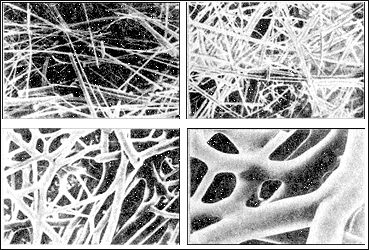 |
Top on the left: initial fibres (x2000) Top on the right: after dispersion (x2000) Left and right bottom: after heat treatment (x5000 and x15000) the solidity of the matter increases by 0.7 to 4 kgf/kW.cm |
Various requirements were necessary for the heat shield, solidity of the tiles, lightness, resistances to high gradients of temperature, small thermal conductibility, high degree of blackness (0.8-0.9), oxidation resistance. All these points leads the engineers to create tiles containing quartz fibres.
In the zones of strong heat (higher than 1250°C), the nose, the leading edge of the wings, it was necessary to create a very resistant material containing carbon because the temperatures could go up until 1650°C. Whereas in the zones where the temperatures did not exceed 370°C the shield was made with organic compounds.
The worked out technique for the creation of the thermal tiles and their physicomechanical characteristics are higher than their foreign counterparts.
The design features of the tiles were: a great recurrence of use (100 cycles), important variations in temperatures (150°C to 1650°C), low coefficient of thermal conductibility 0.06 W/(m*K) at 100°C, 0.12 W/(m*K) at 1100°C, a coefficient dilation of 7/10000000 and a density lower than 0.15 g/cm3.
So that the tiles offer a high strength to the thermal loads it was necessary to use pure matters, the concentration of impurities was to be minimal (particularly into alkaline and alkaline-earth). The concentration of the silicon dioxide was 99.9% what ensured the stability crystallization of amorphous oxide and allowed the guarantee of the materials properties.
The tiles of the shields are stuck to an external cover fabric of 0.3 mm of thickness, which is also stuck to the fuselage. This layer of refractory fabric is used as heat insulator between the shield and the fuselage, and makes it possible to minimize the deformation impact of the shield on this last.

The tiles are positioned on all the surface of the shuttle with a play which takes into account the shield deformation due to the increase of temperature and the differences in mechanical loads during the flight. This play does not exceed 0.3 to 0.5 mm to allow a harmonious flow of the hot air. Space between certain tiles is sometimes filled by sheets containing quartz fibre.
The tiles of black color (more resistant) are positioned on the lower part of the shuttle and hot parts, while the white tiles, which limit the irradiation caused by the sun, are installed on all the remainder.

The analysis of the matters and the determination thickness of the tiles were made according to mathematical models. Moreover, several external parameters were taken into account such as the v conditions, radiations, the convection of heat inside the aerofoil, the plays between the tiles, as well as other factors. The influence of the plays between the tiles is of primary importance because it can reduce the efficacy of the shield considerably (see diagram on the right), this is why this parameter was carefully controlled during all the phases of the manufacture and the exploitation of the shuttle.

The structure of the aerofoil is not made of a block but contains interior cavities. These last make it possible to reduce the thickness of the heat shield, on the other hand heat is transmitted along the strengthening pieces (as you can see it on the diagram) and decreases its effectiveness.

The diagram of the right side shows the temperature evolution of the leading edge of the wing during the time. It is seen that the use of a heat shield containing carbon makes it possible to reduce the temperature of more than 1150°C compared to the external environment.
The tile positionning
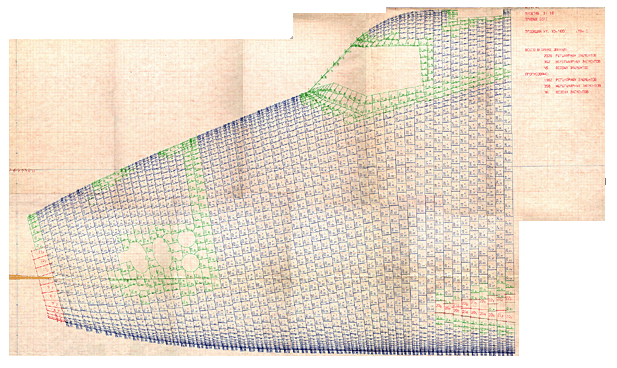
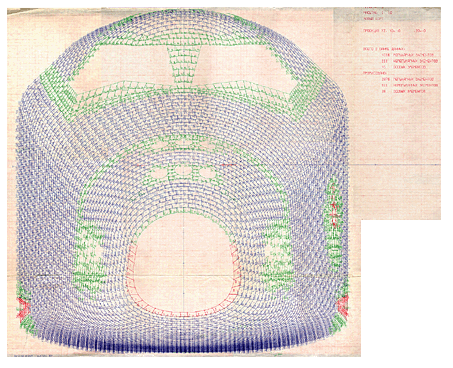
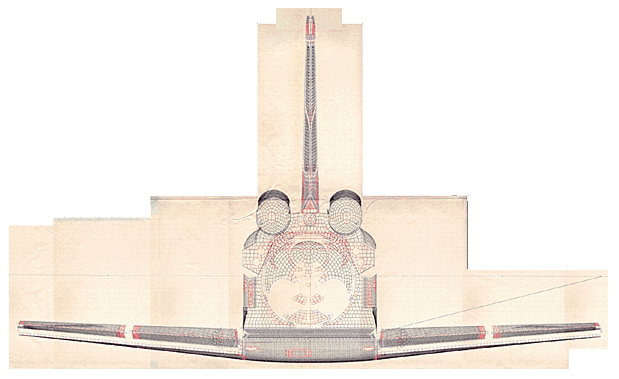
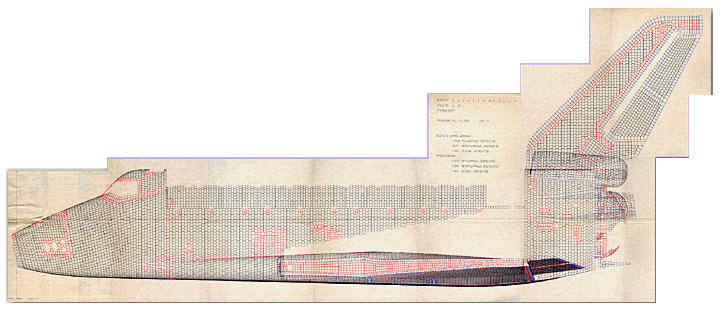
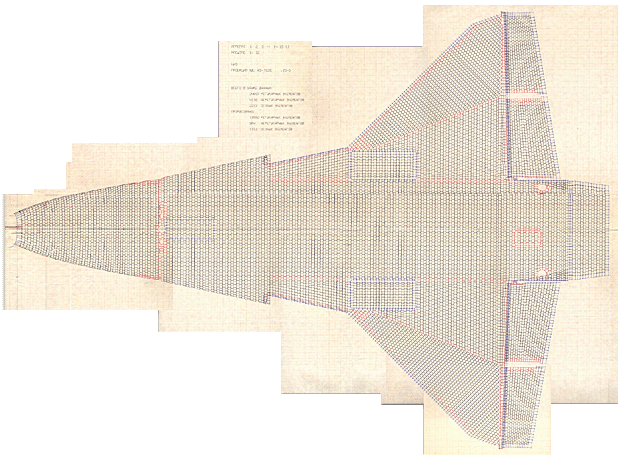
Fuselage temperatures
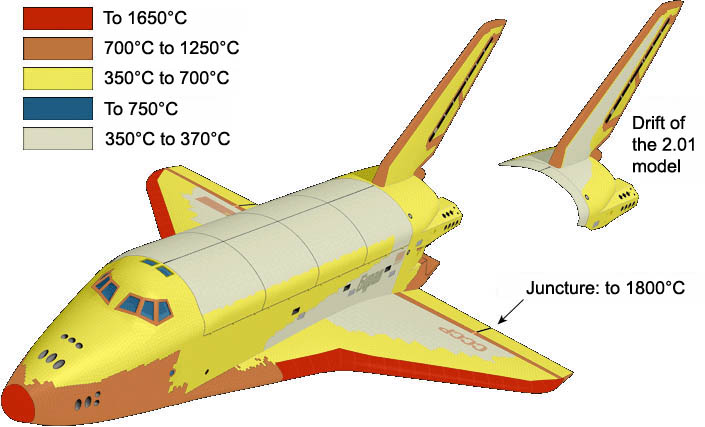
 The hottest parts of the fuselage are the nose and the leading edge of the wings.
The hottest parts of the fuselage are the nose and the leading edge of the wings.
 This zone is protected by silicon dioxyde fibre ceramic tiles.
This zone is protected by silicon dioxyde fibre ceramic tiles.

 The port-holes of the cockpit can heat until 750°C. To guarantee a good heat insulation the port-hole is made of 2 layers, one is a double glazing, as you can see it on the drawing.
The port-holes of the cockpit can heat until 750°C. To guarantee a good heat insulation the port-hole is made of 2 layers, one is a double glazing, as you can see it on the drawing.
 In the zones where the temperature is less high, an organic fibrous matters is used.
In the zones where the temperature is less high, an organic fibrous matters is used.

